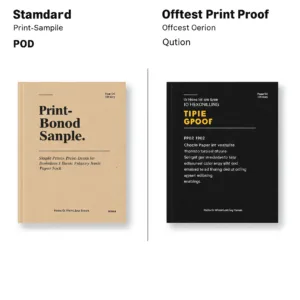Self-publishing a book doesn’t have to drain your bank account. With the right strategies, you can produce a professional-quality book and effectively market it, all while staying within a reasonable budget. This guide breaks down exactly how to do it.
To control your self-publishing budget, prioritize essential expenses like professional editing and a compelling cover design. Utilize free or low-cost tools for writing (Google Docs), design (Canva), and formatting (Reedsy Book Editor). Purchase ISBNs in bulk if you plan multiple books. Create a detailed budget spreadsheet, track spending, and focus marketing efforts on building an author platform and leveraging organic reach before investing heavily in paid advertising. Consider print-on-demand services to minimize upfront printing costs.
Discover proven tactics to slash self-publishing costs without sacrificing quality, including specific resource recommendations, budgeting templates, and real-world case studies. Want to publish like a pro on a shoestring? Keep reading.
Self-Publishing Doesn’t Have to Break the Bank
Let’s be honest: self-publishing has a reputation for being expensive. You might see online forums filled with authors lamenting their massive expenses, or you might have stumbled upon “all-inclusive” packages that cost more than a used car. This can create a high-cost perception, but the reality is far more flexible.
The High-Cost Perception vs. Reality:
It’s true that self-publishing can be costly if you’re not careful. But it’s also incredibly adaptable. You have control over almost every aspect of the process, and that includes the budget. Success doesn’t hinge on emptying your bank account; it hinges on making informed decisions. Think of it as “strategic spending,” prioritizing value and return on investment (ROI) over simply chasing the lowest price.
Why Budget Control is Crucial for First-Time Authors:
As a first-time author, you’re likely working with limited funds, and the risk feels higher because you don’t have a traditional publisher’s financial backing. Mastering your budget is crucial for several reasons:
- Avoiding Debt: You want to launch your book without going into debt, creating unnecessary financial stress.
- Maximizing ROI: Every dollar you spend should be working for you, bringing you closer to your publishing goals.
- Building a Sustainable Author Business: Smart budgeting isn’t just about this one book; it’s about creating a sustainable financial model for your entire author career.
As publishing industry expert Jane Friedman puts it, “The biggest mistake I see authors making: spending too much money, too soon, on things that don’t matter.” Keep this wisdom in mind as we move forward.
The Self-Publishing Cost Landscape: A Detailed Breakdown

To effectively control your budget, you need to understand exactly where your money might go. Let’s break down the essential expenses, separating the non-negotiables from the areas where you have more flexibility.
Essential Expenses: Where Your Money Will Go (and Why):
-
Editing (The Non-Negotiable): This is the one area where you absolutely should not skimp. A professionally edited book is crucial for credibility and reader satisfaction. There are different levels of editing, each with its own cost:
- Developmental Editing: Big-picture feedback on plot, structure, and character development. (Typically the most expensive, ranging from $500 to $3000 or more, depending on manuscript length and complexity.)
- Line Editing: Focuses on sentence-level clarity, flow, and style.
- Copy Editing: Corrects grammar, punctuation, spelling, and consistency errors. (Expect to pay around $0.02 per word for basic copy editing.)
- Proofreading: The final polish, catching any remaining typos or formatting issues.
While the costs can seem daunting, consider exploring platforms like Reedsy or Upwork to find qualified freelance editors who might offer more competitive rates than established agencies. Remember to view sample edits and client reviews.
-
- Pre-made Covers: These are pre-designed covers that you can purchase for a lower price (often $100-$300). The downside is that they aren’t unique, although you should make absolutely sure the designer is only selling the cover to one author.
- Custom Cover Design: A designer creates a unique cover specifically for your book. Prices range widely, from around $300 to $1500 or more, depending on the designer’s experience and the complexity of the design. Check out services like Fiverr or 99designs, but always scrutinize portfolios carefully.
- DIY with Tools: If you have some design skills, you can use tools like Canva (which offers free and paid options) to create your own cover. This can be a great way to save money, but be honest about your abilities – a poorly designed cover will hurt your sales.
Cover Design (Your Book’s First Impression): Your cover is the first thing potential readers see, and it must be professional and genre-appropriate. You have several options:
-
Formatting and Typesetting (Making it Readable): Formatting ensures your book looks professional and is easy to read, whether it’s an ebook or a print book. Again, you have choices:
- DIY: You can format your book yourself using free tools like the Reedsy Book Editor or even Google Docs, but this requires learning the intricacies of book formatting.
- Software: Programs like Vellum (Mac only, $249.99 for ebook and print formatting) and Atticus (cross-platform, a one time $147) provide user-friendly interfaces and professional results. These are one-time purchases, making them cost-effective in the long run.
- Professional Formatting: You can hire a professional formatter for around $50-$300, depending on the book’s length and complexity.
-
ISBN and Copyright (The Legal Stuff): An ISBN (International Standard Book Number) is a unique identifier for your book. In the US, you purchase ISBNs through Bowker. A single ISBN costs $125, but a block of 10 costs $295 (bringing the per-ISBN cost down to $29.50). If you plan to publish multiple books or formats, buying in bulk is far more economical.
Copyright registration is technically optional, but it provides legal protection for your work. While optional, for added legal protection, you could register your copyright online through the U.S. Copyright Office for a fee of around $45.
-
Website and Author Platform (Optional, but Recommended): Even though this might seem like a non-essential expense, a website is very usefull. Keep in mind that most website builders and hosting companies offer an annual plan. Divide the cost by 12. That’s how much to budget for each month.
-
Printing (If Applicable): If you’re planning to offer a print version of your book, you have two main options:
- Print-on-Demand (POD): Services like Amazon KDP Print and IngramSpark print books only when they’re ordered. This eliminates the need for upfront printing costs and inventory storage. KDP print does not carry a set-up fee. IngramSpark, however has a $49 set up fee.
- Offset Printing: This involves printing a large quantity of books upfront. While the per-unit cost is lower, you’ll need to pay for all the books upfront and manage storage and fulfillment yourself. This is generally only recommended for authors who are confident in their ability to sell a large volume of books.
-
Marketing and Promotion (Getting Your Book Seen): This is where your budget can vary wildly. You can spend nothing (relying solely on organic reach) or thousands of dollars (on paid advertising and professional marketing services). The key is to start small, track your results, and scale up what works. We’ll delve deeper into marketing strategies later.
Hidden Costs to Watch Out For:
Be aware of revision costs. Most professionals provide a set amount of revisions in their quote. Make sure to ask, so that there are no surprises later. Also, set aside a small contigency for unexpected costs.
The Frugal Author’s Toolkit: Free & Low-Cost Resources

One of the best ways to control your self-publishing budget is to leverage the wealth of free and low-cost resources available. Here’s a breakdown by category:
Writing and Editing Tools:
- Google Docs: A powerful, free word processor with excellent collaboration features. Perfect for writing and sharing your manuscript with beta readers or your editor.
- Grammarly: This tool helps you identify grammar, spelling, and punctuation errors. The free version is useful for basic proofreading, while the premium version offers more advanced suggestions.
- Hemingway Editor: This free web-based tool helps you improve the readability of your writing by highlighting long sentences, adverbs, and passive voice.
- ProWritingAid: A paid tool, it’s an alternative to Grammarly, and may be more useful to authors.
Cover Design Resources:
- Canva: This user-friendly design platform offers a wide range of templates, including book covers. The free version provides plenty of options, and the paid version unlocks even more features and assets.
- GIMP: A free, open-source image editing program that’s a powerful alternative to Photoshop. It has a steeper learning curve than Canva, but offers more control over your design.
- Unsplash and Pexels: These websites offer a vast library of high-quality, royalty-free stock photos that you can use for your cover. Always double-check the licensing terms to ensure you can use the images commercially.
Formatting and Typesetting Tools:
- Reedsy Book Editor: This free, web-based tool allows you to format your book for both ebook and print. It’s simple to use and produces professional-looking results.
- Atticus: Affordable, and works on all computers.
Marketing and Promotion Resources:
- Social Media Platforms: Facebook, Twitter, Instagram, TikTok – these platforms are free to use and can be powerful tools for connecting with readers and building your author platform. The key is to choose the platforms where your target audience hangs out and to engage consistently.
- Mailchimp: This email marketing service offers a free plan that allows you to build an email list of up to 2,000 subscribers. Email marketing is one of the most effective ways to connect with readers and promote your books.
- Buffer and Hootsuite: These social media management tools offer free plans that allow you to schedule posts in advance, saving you time and helping you maintain a consistent presence.
- Canva: Create social media graphics with this tool.
Using Free Tools Effectively:
Free tools will require you to be more hands on. This is where some authors overspend. Instead of focusing on writing, they spend too much time trying to learn graphic design, or marketing. Assess your skill, and be honest. Is your time better spent writing, or can you really master cover design?
Crafting Your Self-Publishing Budget: A Step-by-Step Guide
Now that you know the potential costs and available resources, it’s time to create your budget. This isn’t just about listing numbers; it’s about making informed decisions and prioritizing your spending.
Step 1: Define Your Goals and Priorities:
Before you spend a single dollar, ask yourself:
- What are your publishing goals?: Are you aiming to build a long-term author career, generate significant income, or simply share your story with the world? Your goals will influence your spending decisions.
- What’s your realistic budget range?: Be honest with yourself about how much you can comfortably afford to spend. Don’t go into debt!
- Which aspects are most important to you?: Is a top-notch professional edit your top priority, or are you willing to compromise on editing to invest more in a stunning cover?
Step 2: Create a Detailed Budget Spreadsheet:
A spreadsheet is your best friend for tracking expenses. You can use Google Sheets (free) or Excel. Create a spreadsheet with the following columns:
- Category: (e.g., Editing, Cover Design, Formatting, ISBN, Marketing, Printing, Website, Contingency)
- Estimated Cost: Your initial estimate for each expense.
- Actual Cost: The actual amount you spend.
- Notes: Any relevant notes, such as the service provider you used, quotes you received, or reasons for cost overruns.
Separate your spreadsheet into sections for pre-publication expenses (everything before your book launch) and post-publication expenses (ongoing marketing and promotion). I recommend obtaining a template on-line to get started.
Step 3: Research and Get Quotes:
Don’t settle for the first price you see. Get quotes from multiple editors, designers, and other service providers. Compare their prices, experience, and portfolios. Read reviews and testimonials.
Step 4: Allocate Your Funds Strategically:
Based on your goals, priorities, and research, allocate your funds to each category. Remember:
- Prioritize essential expenses: Editing and cover design are generally considered non-negotiable for a professional-quality book.
- Allocate a realistic amount for marketing: Even a small amount can make a difference if used strategically.
- Include a contingency fund: This will cover unexpected costs or allow you to take advantage of opportunities that arise. Aim for 5-10% of your total budget.
Step 5: Track Your Spending and Adjust:
As you start spending money, meticulously track your actual costs in your spreadsheet. This will help you stay on budget and identify areas where you might be overspending. Be prepared to adjust your plan if necessary. If you’re over budget in one area, see if you can cut back in another.
Step-by-step example for calculating costs:
Let’s say you are budgeting for author copies of your print-on-demand book.
- Find the per-book cost: Check your POD service (KDP or IngramSpark) for the printing cost per book. Let’s say it’s $4.
- Estimate shipping: Estimate the shipping cost per book. Let’s say it’s $2.
- Decide how many copies: Decide how many copies you want to order. Let’s say you want 20.
- Calculate: (Per-book cost + Shipping per book) * Number of books = Total cost. ($4 + $2) * 20 = $120.
You can use similar calculations for ISBNs (remember the bulk discount!), website hosting (annual fee divided by 12 for monthly cost), and other expenses.
Smart Marketing on a Shoestring Budget

Marketing is essential for getting your book in front of readers, but it doesn’t have to break the bank. Here’s how to approach marketing strategically and cost-effectively.
Building Your Author Platform (The Foundation):
Think of your author platform as your online home base. It’s where readers can find you, learn about your books, and connect with you. A strong platform is essential for long-term success.
- Website/Blog: You can create a simple website using free platforms like WordPress.com or Blogger, or invest in a self-hosted WordPress site (which offers more flexibility and control).
- Social Media: Don’t try to be everywhere at once. Choose one or two social media platforms where your target audience hangs out, and focus your efforts there. Consistency is key.
- Email List: This is one of your most valuable assets. An email list allows you to communicate directly with your readers, build relationships, and promote your books. Use a service like Mailchimp (which has a free plan) to get started. As Bestselling Indie Author and Founder of Self Publishing Formula, Mark Dawson states, “The key to success as an indie author is taking control of your publishing business, and that includes your finances.” Building a platform builds your business.
Leveraging Free Marketing Opportunities:
There are many ways to promote your book without spending any money:
- Guest Blogging: Write guest posts for blogs in your genre or niche. This exposes you to a new audience and builds your credibility.
- Podcast Interviews: Offer yourself as a guest on podcasts related to your book’s topic or target audience.
- Social Media Engagement: Don’t just broadcast; interact! Respond to comments, answer questions, and participate in relevant conversations.
- Book Reviews: Send Advance Reader Copies (ARCs) to book bloggers, reviewers, and influencers in your genre. Positive reviews can significantly boost your book’s visibility.
- Goodreads Giveaways: Goodreads is a popular platform for book lovers. Running a giveaway can generate buzz and attract new readers.
Paid Advertising (When and How to Use It):
Paid advertising can be effective, but it’s crucial to approach it strategically:
- Amazon Ads: Start with a small daily budget (e.g., $10) and target specific keywords related to your book’s genre and audience. Monitor your results closely and adjust your campaigns as needed.
- Facebook Ads: Facebook’s targeting options allow you to reach very specific demographics and interests. Again, start small and test different ad creatives and targeting options.
- Other Options: Bookbub is an option.
“Marketing” the Right Way:
Many new authors make the mistake of viewing “marketing” as only paid advertising. Instead, view it as building a relationship with readers. Share your journey. Offer value. Slow and steady is better than a huge one time expense.
Conclusion
Self-publishing can feel like a daunting financial undertaking, but it doesn’t have to be. By understanding the essential costs, leveraging free and low-cost resources, creating a detailed budget, and marketing strategically, you can successfully launch your book.







